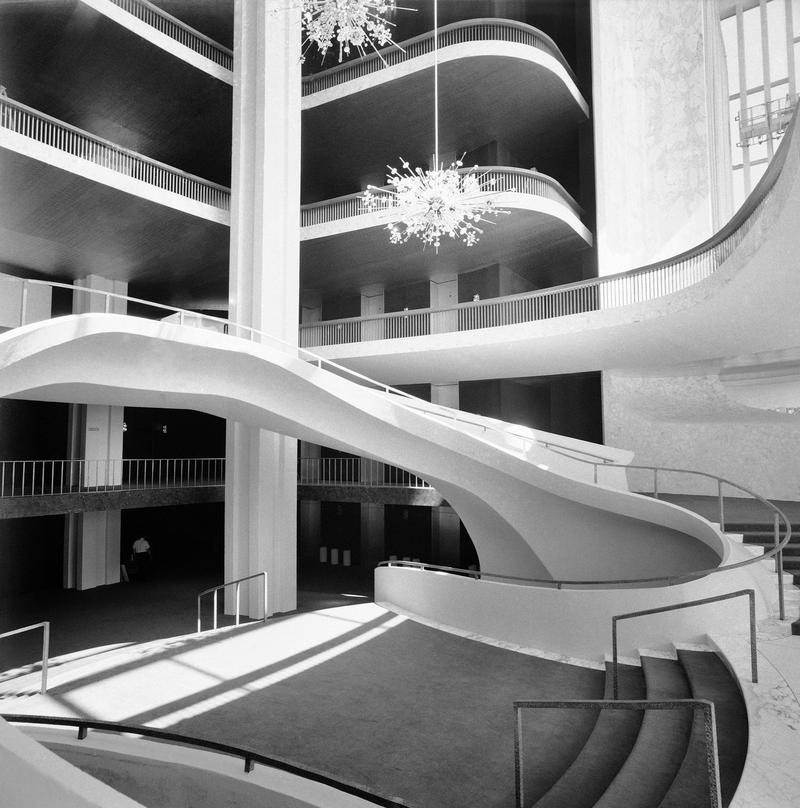One of the first critiques on this series was more than a year ago, at the time that the new Metropolitan Opera House at Lincoln Center had its grand opening, I described the interior of this building as well as exterior, and voiced my disappointment that it failed to live up to the expectations of New Yorkers who had expected a unique and handsome building, distinguished in every way, worthy of its high function and its opulent sponsorship. The new opera house has been in operation for a year, and the adjacent buildings are filled nightly with performances as well. Some further observations may be in order at this time.
When the Philharmonic Hall originally opened, its interior was most satisfactory. In fact, it was a happy experience to come into the glamour of gold and blue trim of the main chamber contrasting so beautifully with the natural woodwork of the remaining Interior surfaces. Unfortunately, the need to improve the acoustics led the architects to sacrifice the fine decorative effects of their original concept, so that, with improved baffles and altered floor and wall treatment, as well as the different type of sounding screens behind the stage, the entire auditorium is now of a dull monotone brown. With the gold and the blue gone forever, and the plush and beige carpeting and blue upholstery replaced with smoother and blander materials the loss to the eye must be measured against the gain to the ear in the distinctly improved acoustics. The interior of the New York State Theater, fortunately, remains as lively and attractive as ever with its great lobby, the best big ballroom In town. Neither of these two buildings has any particular distinction from the outside, so that, looking at them, one could take either of them for a bank, a high school, or a corporate headquarters.
The fourth building in the group to be finished, namely the Vivian Beaumont Theater, is, I think, the best of them all. The Beaumont Theater, designed by the late Eero Saarinen and his associates, houses, as well, the Library and Museum of the Performing Arts, which, with the theater and a smaller auditorium, have been designed to form a most effective architectural composition. Inside, the theater, library, and museum are most comfortable, attractive, and as far as I know, efficient for their working functions. As a matter of fact, the building has one little gimmick which beets anything I've seen in any New York theater. Instead of having the usual cloakrooms, where theater goers hesitate to check their hats and coats because of the Inevitable long wait in line after the show is over, the Beaumont Theater has in its inner lobby a set of lockers, as in a school corridor, into which theater patrons can insert their wraps, coats, umbrellas, and the occasional overnight bag or briefcase and remove the key, as one does from a locker in a railroad station. This do-it-yourself checking service is an excellent idea that should be put Into all now theaters built in the city.
But what Is best about the Beaumont Theater is its external appearance, the strongly articulated glass box which has been dramatized by the striking, bold lid, so to speak, that sits on top of it and that is one story high and contains some of the library and museum activities. The interior of the brightly colored lobby of the theater is clearly visible from the main outdoor platform of the center, across a reflecting pool, which creates a dramatic impact that is so sadly lacking in the larger buildings in the group. Architecturally speaking, it's the best of the bunch.
This Is Robert C. Weinberg critic in architecture for WNYC.

